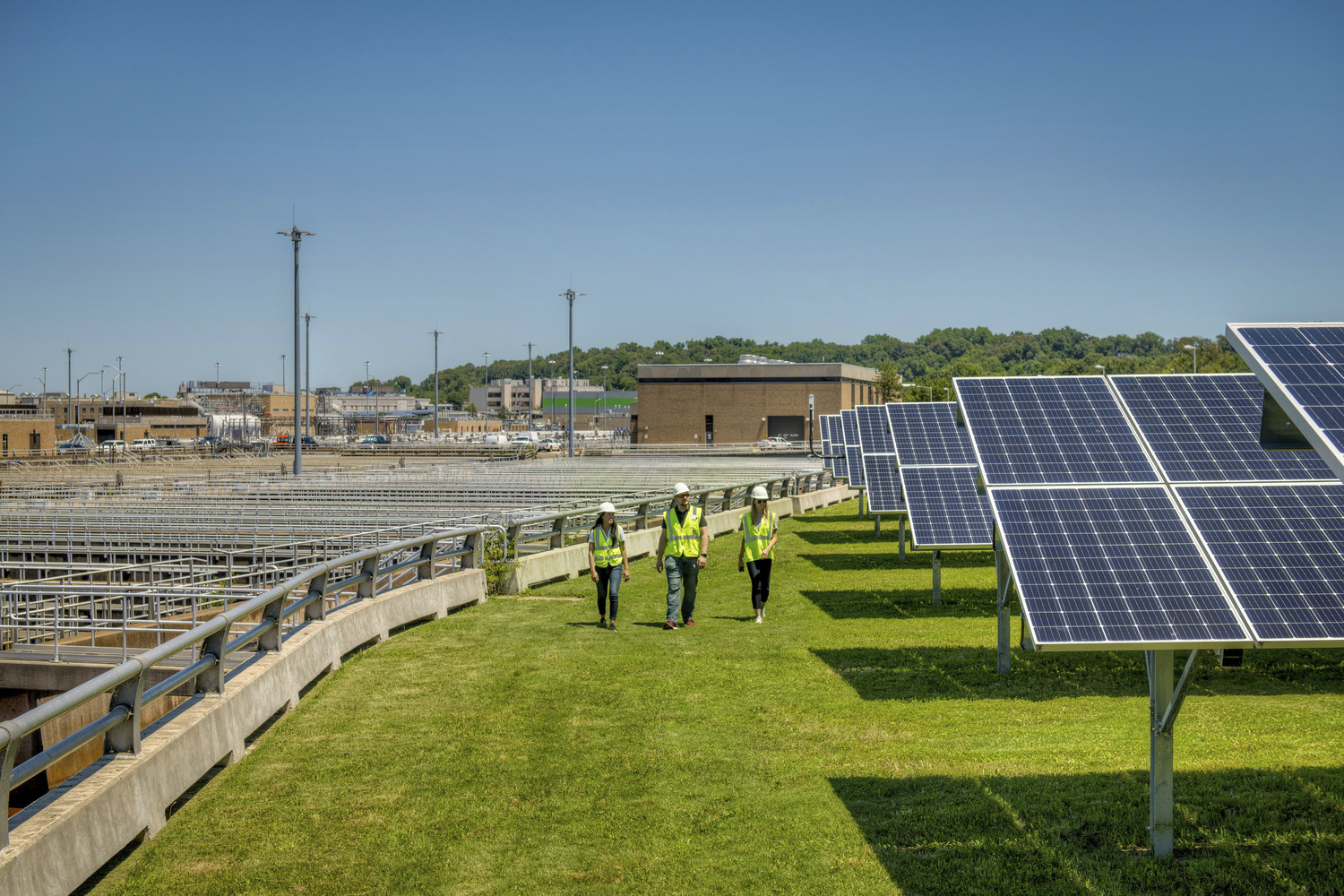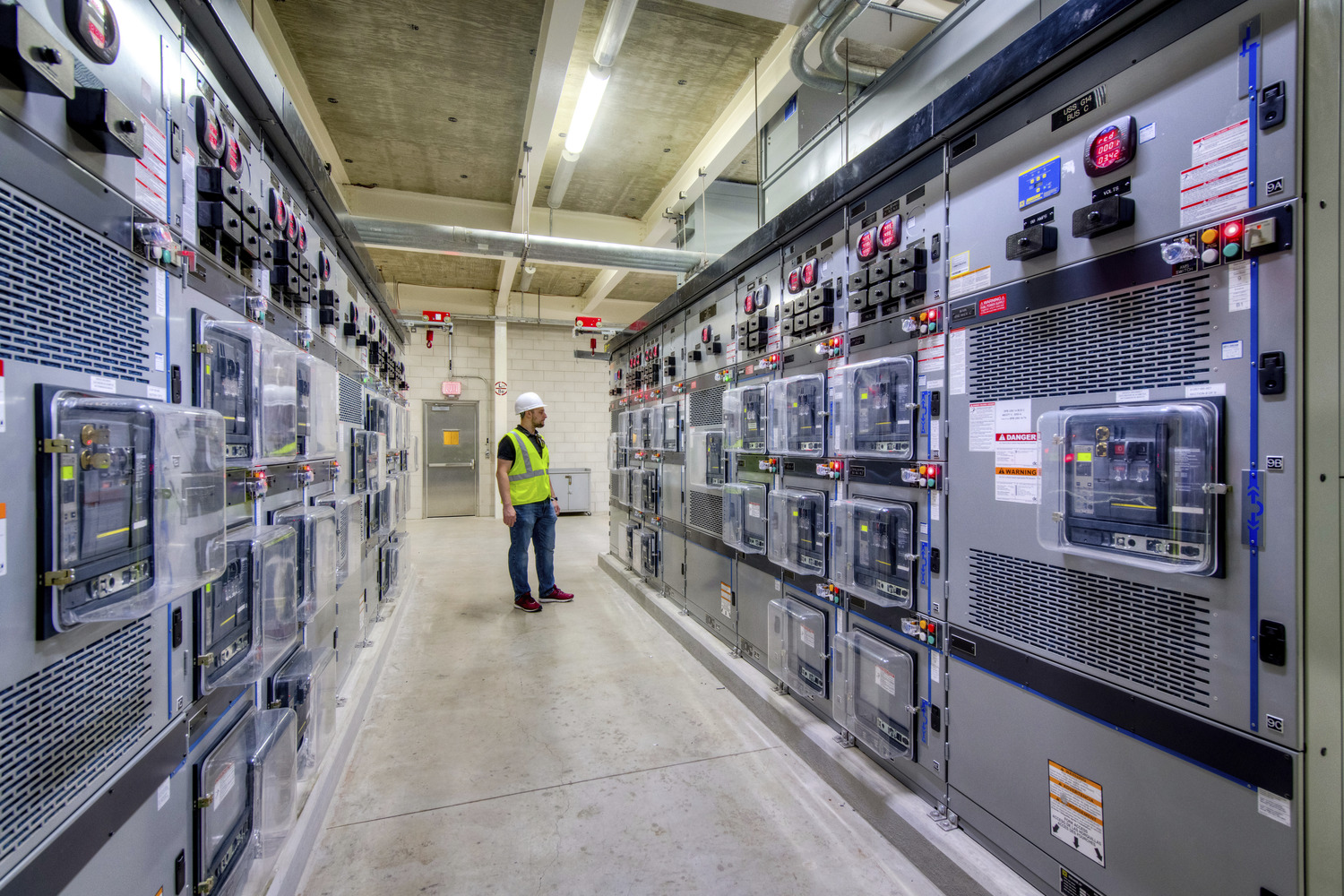Strategies for Solar Success
In the blink of an eye, solar power has shifted from an emerging option for clean energy to an expectation. Solar readiness is an integral part of the journey to a better clean energy future. Although photovoltaic (PV) design is repetitive in nature, it's important to consider the unique set of constraints, obstacles, and needs of each project.

Being solar-ready starts with guidelines for sizing a PV array to offset a building's energy consumption, and design considerations to ensure the building and/or site can support the array. After array size is calculated, all other design decisions can be made. It is paramount to keep in mind to meet the requirements of the adopted codes at the time of permitting.
Setting Goals: The first step in planning for a solar-ready building is determining the goal of the PV system for current and future needs. Many times a new building project will have an energy goal associated with it, such as net-zero or 30 percent energy from renewables. This goal will inform the size of the array to be designed. The energy production target in kilowatt hours (kWh) for a new building can be calculated using an energy model or target Energy Use Intensity (EUI).
Determining Needs: The second step in planning is determining the amount of PV needed to achieve the energy goal from step one. To provide adequate provisions for a PV system installed as part of building construction or in the future, the photovoltaic system array size (in kilowatts DC and AC) is calculated. The resulting size will be referred to as the Target Array Size (TAS) in kW DC. Determining the TAS includes calculating the PV system production factor in kWh per kW per year and dividing the energy target by the production factor. The production factor is determined by modeling a sample PV system. Several considerations determine the estimated system production factor; this includes current module and inverter technologies, local weather based on TMY3 file or similar, and system orientation, tilt, and azimuth. Not to be forgotten are system losses and shading.
Area Requirements: The third step is to determine system location and area requirements. Once the TAS is known, the area required for the array can be calculated and other mounting requirements can begin to be considered. The area calculated in this step shall be used to allocate dedicated PV space into the building design, free from obstructions and shading. The appropriate structural provisions shall be included in the PV space design to ensure the space can support the PV array. The location of the PV inverters, which convert the DC electricity of the PV system to the AC electricity utilized by the building, should be planned for to the best extent possible.
 Electrical Requirements: The fourth and final step in this process is to account for electrical requirements. Once the proposed array is located and the structure is designed to support it, then electrical considerations shall be accounted for in the design. The electrical interconnection of the system is designed based on the TAS AC system size. The AC system size is generally 80-100 percent of the DC system size. One of two common types of interconnection options per NEC 705.12 are incorporated into the design of the building or site.
Electrical Requirements: The fourth and final step in this process is to account for electrical requirements. Once the proposed array is located and the structure is designed to support it, then electrical considerations shall be accounted for in the design. The electrical interconnection of the system is designed based on the TAS AC system size. The AC system size is generally 80-100 percent of the DC system size. One of two common types of interconnection options per NEC 705.12 are incorporated into the design of the building or site.
- Load side connections (NEC 705.12(B)) are typically used for arrays with AC ratings significantly smaller than the main service rating. Projects with energy goals of 50 percent or less typically meet this condition. For a load side connection, a PV interconnection overcurrent protection device (OCPD, circuit breaker or fused switch) downstream of the main service disconnect shall be provided. The sum of the PV OCPD and the main OCPD shall not exceed 100-120 percent of the switchboard bus rating depending on its location. This may result in sizing the switchboard bussing larger than the switchboard's main OCPD. For larger array sizes or projects with large energy goals, a supply side connection is commonly used.
- On the supply side, the size of the PV interconnection OCPD can be as large as the full rating of the busbars if located between the utility meter and switchboard's main OCPD. This interconnection may require an additional section in the switchboard, increasing its length. If the array is to be installed in the future, provisions before this should be made during initial construction. At a minimum, provide a section of gear sized to house the required interconnection breaker ahead of the main breaker section, with provisions to install a breaker in the future. A better provision is an adjustable trip breaker (with EMRS, if required) sized equal to the main breaker in the section before the main breaker.
Electrical requirements also include AC combiner panels or switchboards, as well as utility-required equipment, such as utility disconnects, utility meters and CT cabinets. For larger arrays, the utility may require relays and remote terminal units (RTUs). Pathways and installation space should be considered for these items during initial design. Early conversations with the utility can help determine the exact considerations required for the TAS. Finally, communications wiring is typically required alongside power conductors. Be sure to coordinate a low voltage pathway parallel with PV pathways.
For most solar ready buildings, it is impossible to know exactly how a PV system will be implemented in the future in regard to size, products, etc. While the term "Solar Ready" is starting to appear as a requirement in many jurisdictions, it is rarely defined. The steps listed above are designed to help set expectations, maximize the success and, minimize the impact from construction of a future PV installation project. Following these guidelines will help steer the solar ready design toward achieve maximum benefit to all involved parties, now and in the future.
 Sean Avery, is an Electrical Engineering Leader at DLR Group. He is a PV design expert passionate about integrated design and delivery, with particular emphasis on energy-efficiency, alternative energy, and designing photovoltaic energy systems.
Sean Avery, is an Electrical Engineering Leader at DLR Group. He is a PV design expert passionate about integrated design and delivery, with particular emphasis on energy-efficiency, alternative energy, and designing photovoltaic energy systems.
DLR Group | www.dlrgroup.com
Author: Sean Avery
Volume: 2021 September/October










.png?r=4115)

